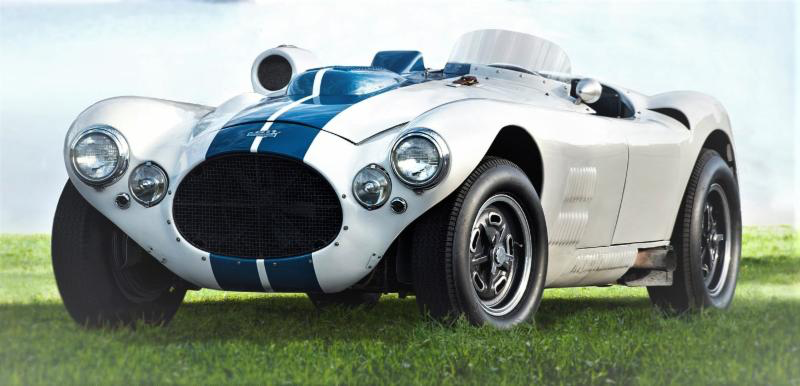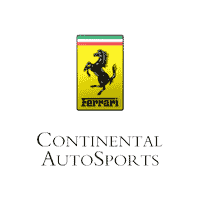Once Upon A Wire Wheel
The following is the fifth in a series of articles recalling highlights from the Region’s beginnings through the first 50 years. This was written by Bernie & Norm Koglin with input from Fred Wacker, Bud Seaverns, and Burdie Martin to name a few. Look for more articles though out the year. Have fun exploring the past and how it relates to now.

The Pros Are Here, But The Sprints Are Alive * 1972 – 1976
As the five-year period covered by this installment got under way, professional sports car racing in the U.S. had become the domain of SCCA. No series in the World could compare to the Can-Am. The competing drivers included world and national champions, and the cars had become the most sophisticated, noisy, fast and just plain exciting sports cars ever developed. For those that were there, no series has yet achieved the same status. Just ask anyone that had the opportunity to watch a Mk8 McLaren, a UOP Shadow and a 917 Porsche, nose to tail and side by side, blasting through corner eleven. During this era the June Sprints were drawing plenty of entries and good crowds of paying spectators.
In the January/February, 1972 issue of PISTON PATTER there was an advertisement for John Weinberger’s Continental Motors, and it is interesting to note that the multiple Continental dealerships of today do not include any of the five cars listed in the ad. Of course, Triumph, MG/Austin and Jensen do not exist anymore, and Fiat is not imported at present. On the other hand, John would probably not object to still having Jaguar on his letterhead.
The July Road America pro race weekend again featured Trans Am cars on Saturday and Formula Continental (F 5000) on Sunday. Both hotly contested events were gaining more and more attention from racing fans as well as the Press.
Saturday of the Can-Am weekend that year was wet. That is to say Road America was inundated. Can-Am races earlier in the year had made it clear that a new presence was on the scene. The Panzer Porsches had arrived! And arrived with a bang. Due to a prior commitments, George Follmer, driver of the Penske 917 10K Porsche, had missed the good weather qualifying on Friday, as had McLaren team driver Peter Revson. In the rain on Saturday Follmer qualified 13th and Revson 25th. Denny Hulme, in another Team McLaren, had set a new qualifying lap record on Friday, in the dry. Sunday the weather cleared and the Can-Am was off to a dry start with everyone anticipating a tight race. Never mind. Follmer charged through the field into first place. Desperately trying to stay with the exotic, turbocharged, 12 cylinder Porsche both Team McLarens broke, Denny on lap twelve and Revson on lap 22. And thus the McLaren domination of the Can-Am at Road America ended. Francois Cevert, in a nonteam McLaren finished 2nd .
As might be expected, the 1972 Chicago Region Fashion Show was a great success. One male member even bid on a skimpy bikini … as occupied.
A contingent of rallyists was working at firing up interest in that activity, but seemed to be paddling upstream. Fun rallies were still attracting some that enjoyed the social aspect, but technical rallying was not getting much support.
Another area of Club activity was coming along at a great rate. In 1971, Team Carrera, an autocross/solo racing club, was dissolved and our Board of Directors arranged to absorb the members of that group who wished to join the Chicago Region. Since they were real enthusiasts they got right down to business and began showing us how to conduct a top-notch Solo II program. Many of these folks were and are active in all aspects of Region activities, and several have served as Regional Executive, including both Ed and Cindy Pomeroy, Kim Breitenbach, Claire Ball and his wife Peg Ball, our current R.E.
Star of the 1973 fashion show was a professional belly dancer. She was terrific and received a tremendous ovation. This, the fourth show, was undoubtedly the best. Norma White and her helpers had become very professional. John Napier Hill, a native of Scotland modeling an authentic kilt, drew many whistles from the ladies, but refused to answer the standard question.
There were 405 cars entered for the June Sprints, and they put on a great bunch of races for a crowd of over 25,000 spectators. Seven or eight competitive races, great brats and a beautiful course winding through the Wisconsin countryside remained an attractive way to spend a weekend for many folks.
In July we put on another Road America pro weekend for Trans Am and Formula 5000. John Greenwood won the Trans Am in a Corvette, followed by Warren Agor’s Camaro. On Sunday, qualifying for the Formula 5000 race consisted of two qualifying races followed by a 100-mile race. It was a day of great, competitive racing with Brian Redman the eventual winner. Brian was required to hold off Jody Scheckter who trailed him by only 11/2 seconds at the finish.
When Mark Donahue qualified for the 1973 Road America Can-Am behind the wheel of a Penske Sunoco Porsche 917 30KL, he immediately proceeded to break Denny Hulme’s 1972 RA absolute track record by almost 7 seconds! The race was run in two heats and Donahue crossed the finish line ahead of Jody Scheckter by 22 seconds in the first heat and by 28 in the second heat. Scheckter piloted one of Vasek Polak’s 917 10K’s and George Follmer followed him in the RC Cola 917 10K. McLaren did not develop a new car for ’73, but Mk 8F’s finished 4th and 5th. First place was no contest. All racing took place behind Mark, who dominated the season and became Can-Am champion.
The superiority of the Porsches seemed to recall the winning ways of the McLaren team in prior years. Donahue, in the new 917 30K, won the last seven 1973 races going away, and one year old Porsches won the first two events. However, smaller racecar builders could not match the money and resources that large manufacturers such as Porsche could invest in development. Trouble was around the corner for Can-Am; spectators still came to see the magnificent Sunoco Porsche, and the incomparable Mark Donahue, but no competition was on the horizon.
Under the direction of RE Emmett Stains, the Chicago Region organized a spectacular testimonial dinner for Clif Tufte, on January 25, 1974. This was the man that had had the vision, then implemented and finally managed Road America for over twenty years.
Jerry Hansen won the FA and BSR races at the ’74 June Sprints. Most of us must have been working the event, because not one Chicago Region driver won a race.
Production V8′ s still seemed to lack the staying power of the well setup Porsches. In 1974 this gave Peter Gregg the Trans Am victory over Warren Agor’s Camaro, which needed a stop for oil. The next day the F-5000 race was won by Mario Andretti with Brian Redman less than a second back. Several turbocharged Indy cars made a stab at running this event, but needed more testing to properly set up the cars to be competitive with the larger displacement F/5000 cars.
By reducing the fuel tank capacity for the 1974 Can-Am, SCCA had hoped to equalize the cars. Don Nichols, designer of the Universal Oil Products (UOP) Shadows, put together a car to meet this specification. Smaller and lighter than the Porsches and using less fuel, the Shadow DN4 with Jackie Oliver behind the wheel, lost only one of the five races that year. Scooter Patrick won the last REAL Can-Am ever run, anywhere, in a Mk20 McLaren at … you guessed it … Road America. In November SCCA announced that the great Can-Am series was dead. Car constructors could not assure participation so race promoters would not schedule events.
Almost 500 entrants and 55,000 spectators attended the 1975 June Sprints. Club racing was really alive! By the way, Jerry Hansen won three races, AP, ASR and FA.
Trans Am was going through growing pains and with few of the factory sponsored cars entered, Jerry Hansen easily won the 1975 race. This guy owned Road America – a fine driver.
Formula 5000 was now the premier SCCA pro series, and in 1975 Mario Andretti won again at Road America, followed by Jackie Oliver’ s UOP Shadow F/5000 car.
In August, looking for an event to replace the defunct Can-Am, Road America and the Region put on a pro weekend that featured a handicap race. Four separate grids were established and each grid was started on a handicap basis with slower grids staring well before the faster grids. The faster cars gradually gobbled-up the slower cars, but 3rd group pole sitter Vern Schuppan in a 3.0 liter Gulf Mirage ultimately won, coming in ahead of the faster group 4 cars.
We conducted another successful Land O’ Lincoln National rally in 1975, which is surprising considering the apparent lack of interest in this activity by the Region.
A number of our members, driving vintage and contemporary cars, participated in a tour that approximated the first U.S. auto race. The original race took place in 1895 and the route went from Jackson Park to Evanston and Back to Jackson Park.
Fathers’ Day weekend saw 60,000 spectators on hand for another great June Sprints in 1976. Guess who won the ASR race in a three year old Lola and broke his own lap record in the process? Need we say more than J.H.?
Carl Schafer in a 454 cu. in. Camaro won the Trans Am this year holding off George Follmer in a Turbo Carrera. Things were looking up for the big-bore contingent.
The July 1976 F/5000 race was a duel between Jackie Oliver and Al Unser (the elder) with Oliver in the Shadow holding on for the win.
The 1976 August Pro Weekend at RA included another F/5000 race, won by Brian Redman ahead of Danny Ongais. This gave Brian the Series Champion-ship. On Sunday Vern Schuppan driving a car that was low on power the previous day during the F/5000 race, ran well enough to give him his second successive handicap race win.
No Can-Am, but things were going well for the Sprints and the Trans Am was gaining momentum.
Editor’s Note: These articles end in 1989. If any one out there would like to put pen to paper with interesting facts from the years 1990-1999 & 2000-2018 we would very much appreciate them. Send your memories, facts or ramblings to: PegBall@Comcast.Net. Thanks!


